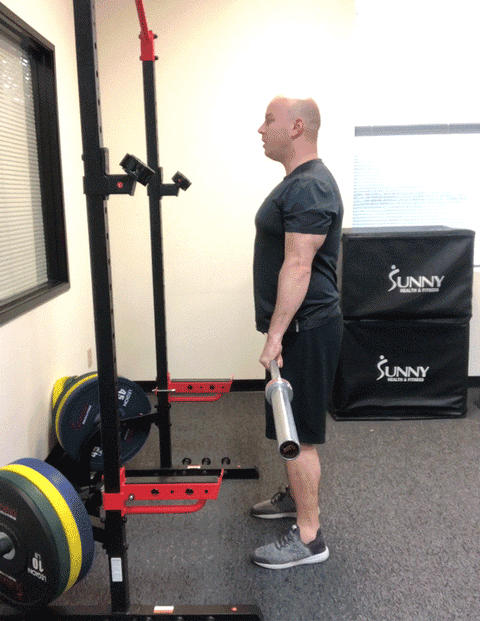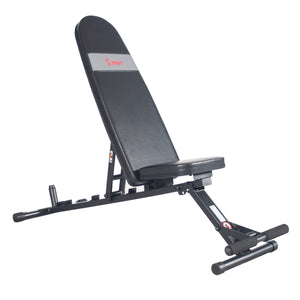If you aren’t familiar with barbell training, head over to your local gym and peek into the weight training area. The most common area you will find barbell users is lying on a flat bench with a 45 pound, 7-foot-long, metal bar suspended over their head and torso. This classic scene is where most people are introduced to barbell training, in the form of the bench press exercise. If you look around a bit more, you may find others placing this same bar across their back as they squat up and down with large circular weights for additional resistance. The barbell squat and bench press are foundational barbell movements that have been around for decades, and don’t seem to be fading in interest. The main reason for this may be because when people are first introduced to barbell training, the bench press and squat are two movements that are assessed most frequently to measure upper and lower body strength. Barbell training also allow users to increase their strength, muscle mass, endurance, and general ability to perform daily activities with ease. While the bench press requires less of a learning curve, the back squat is highly technical and can take years to master with heavy loads. Barbell bar are not limited to only these to exercise. Olympic weightlifting, functional training, strength training, powerlifting, and muscular growth training can all be performed effectively using a barbell with weights and weight plates. This makes the barbell one of if not the most popular weight training piece of equipment you can use to increase human performance.
But where do you start when it comes to barbell training? I recommend getting comfortable with the barbell. What I mean by this is that you need to be comfortable lifting and moving a seven-foot 45-pound bar. By lifting and moving, I am referring to basic movement patterns that you need to master before you can safely start performing barbell exercises with confidence. Lifting, hinging, pushing, pulling, squatting, and pressing are a few of the movement patterns you should practice until the barbell starts to feel light as you perform these movements. It should be noted that barbell users should have a good base of strength before attempting any of the exercises that will be presented in this article. Since the barbell does weight 45 pounds, you should be confident in lifting and pressing this much weigh for more than a couple of repetitions. If 45 pounds seems like too much weight for your to handle, I would recommend increasing you weight training activities until you can perform exercises easily with 20-25-pound dumbbells or kettlebells. If weight training is new to you, it would be a good idea to get some professional help from a personal trainer or other fitness professionals so you can learn the basics of weight training before taking the leap into barbell training.
Basic Barbell Movement Patterns
1. The Hip Hinge

Teaching your hips to flex and extend is critically important when learning how to move a barbell effectively. When you know how to hip hinge, the muscles of your hips and other supporting musculature work together to generate a significant amount of force. To perform this movement, grasp the bar at around shoulder width. Pick up the bar and stand in an upright position. Begin the hip hinge by pushing your hips straight back while keeping a slight bend in your knee. With your back remaining straight, lower your torso towards the ground until you start to feel a stretch in the back of your thighs. The bar should be hanging down around the height or your knees or just below. To finish the hip hinge, drive your hips forward to bring the barbell back into the starting position. You should feel a good squeeze in your glutes as you thrust your hips forward at the top of the movement. The classic Hip Hinge motion shown above, is also known as a Romanian Deadlift and designed to recruit the large muscle groups of your posterior chain like hamstrings and glutes.
2. The Shoulder Shrug

While this exercise may feel deceptively easy, it's important to know that this movement is an essential part of every Olympic weightlifting movement. So, if your goal is to start snatches and power cleans, you need to get comfortable handling large amounts of weight with this exercise. Start by grabbing the bar at shoulder width. With arms straight, shrug your shoulder straight up toward you ears. Drop your shoulders all the way back down before completing additional reps.
3. The Bent Over Row

The bent over row can be described as the opposite of a bench press but requires a significant amount of body control. To begin this movement simply perform all the steps for the descent of the hip hinge exercise. Instead of rising back up, stop the movement and pull the bar up towards your navel. Holding the bent over position, complete each rep of your set.
4. The Back Squat

Even though squatting is a technical movement the back squat is one exercise every barbell workout program must include. This movement can help you develop maximum lower body strength that will help you improve your physical performance. Start by placing your feet about shoulder width apart with toes slightly turned out. While firmly grasping the bar, drop your hips down towards the ground, being careful to keep good upright posture. Tilting your torso forward slightly is acceptable if your back remains straight. Press through the floor with the bottoms of your feet and bring your hips back up and forward to finish each rep.
5. The Overhead Press

The easiest way to perform this movement, is to grasp the bar while it is on a squat rack at or slightly below shoulder height. Walk up to the bar until the top front part of your shoulders are in contact with the bar. The bar should feel like its resting on the front of your shoulders while your hands hold it in place. If you are strong enough, you can lift the bar directly into this position without the assistance of a rack. To initiate the movement, press the bar up from under your chin. Be careful to look up slightly to avoid hitting your chin with the bar. Fully extend your arms over head to finish the rep. You should finish the rep with the bar directly over your head while looking straight ahead. Look back up before bringing the bar down to avoid contact with your head. Once the bar is back across the front of your shoulders, begin the next rep.
Barbell Intro Workout
The barbell intro workout can be done a couple times per week in conjunction with your regular resistance training program. When performing the barbell intro workout becomes easy, you can start to add small amounts of weight to the bar.
























Add Your Name & Email
Please enter your name and email to continue.We won’t display your email publicly.
1 comment
I was delighted to see your site after a long search for the beginner-barbell training guide. Is the
hip-hinge different from deadlift? Please reply. I want to start training with a wooden stick that
I took out of a mop, to start with.